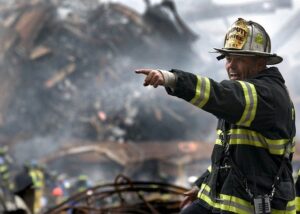 In times of crisis, when communication systems falter and disaster strikes unexpectedly, having a reliable means of communication can mean the difference between life and death. The recent events in Maui have once again highlighted the critical role that amateur radio investments play in filling the gaps left by conventional alert systems. When traditional methods fail, amateur radio operators step in as unsung heroes, providing a lifeline to the affected communities.
In times of crisis, when communication systems falter and disaster strikes unexpectedly, having a reliable means of communication can mean the difference between life and death. The recent events in Maui have once again highlighted the critical role that amateur radio investments play in filling the gaps left by conventional alert systems. When traditional methods fail, amateur radio operators step in as unsung heroes, providing a lifeline to the affected communities.
The Maui Wake-Up Call
The serene paradise of Maui was jolted awake when a sudden and unexpected natural disaster struck, leaving the local population vulnerable and disconnected. The existing alert systems, reliant on modern technology, failed to function due to power outages and infrastructure damage. Amidst this chaos, amateur radio operators emerged as the unsung champions of communication, providing a crucial link between the stranded and the outside world.
The Resilience of Amateur Radio
Amateur radio, often referred to as ham radio, has proven time and again to be a reliable and resilient communication option during emergencies. Unlike conventional systems that rely on cell towers and the electrical grid, amateur radio setups are self-contained and independent. They can operate using batteries, generators, or even solar power, ensuring connectivity even when infrastructure is compromised.
Community Empowerment
One of the most remarkable aspects of amateur radio is the active involvement of community members. These enthusiasts, who dedicate their time to honing their skills and maintaining their equipment, often become integral parts of local disaster response teams. Their investment in knowledge and technology pays off when disaster strikes, as they can establish communication networks to coordinate rescue efforts, relay vital information, and provide much-needed emotional support to those affected.
Adaptability in the Face of Crisis
What sets amateur radio apart is its adaptability. When standard communication channels fail, ham operators are quick to adjust their frequencies, modes, and techniques to ensure messages get through. Whether it’s using Morse code, voice communication, or even digital modes, these operators are versatile and resourceful problem-solvers.
The Call for Investment
In a world that relies heavily on digital communication and technology, it’s easy to overlook the importance of analog alternatives like amateur radio. However, the events in Maui serve as a reminder that investing in ham radio infrastructure, education, and community involvement is not just an option but a necessity. Governments, organizations, and individuals should consider allocating resources to support amateur radio networks, training, and equipment acquisition, creating a more resilient society in the face of unforeseen challenges.
Building a Stronger Future
The aftermath of the Maui incident underscores the need for a comprehensive approach to emergency communication. By integrating amateur radio capabilities into disaster preparedness plans, communities can greatly enhance their resilience. This means encouraging citizens to become licensed amateur radio operators, establishing communication protocols, and investing in robust equipment that can withstand the toughest conditions.
Conclusion
In a world where technology often takes center stage, it’s essential not to overlook the timeless effectiveness of amateur radio. The events in Maui have proven that when all other alert systems fail, the amateur radio community stands ready to bridge the communication gap. By recognizing the value of ham radio investments, we can pave the way for a safer, more connected future, where communities can rely on a resilient network of communication, regardless of the challenges that lie ahead.
